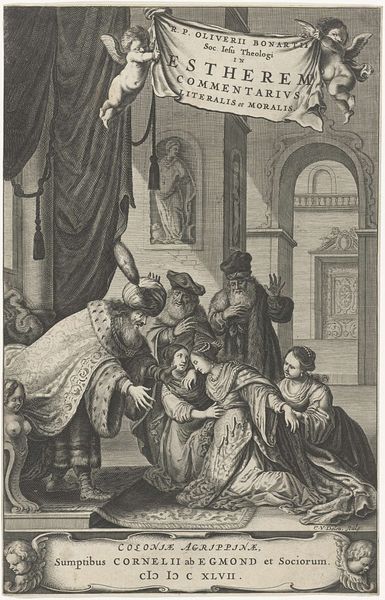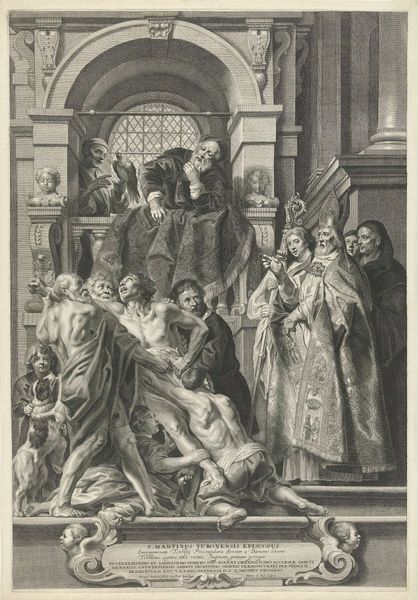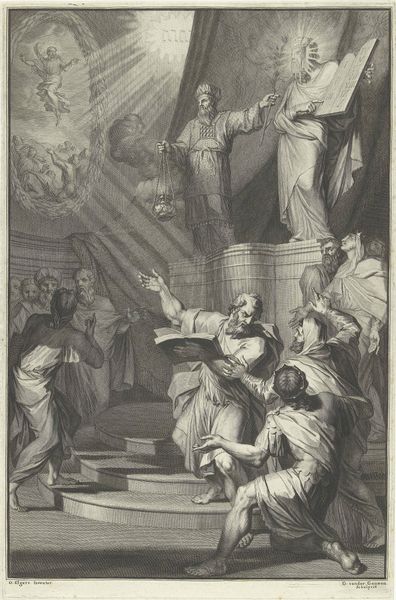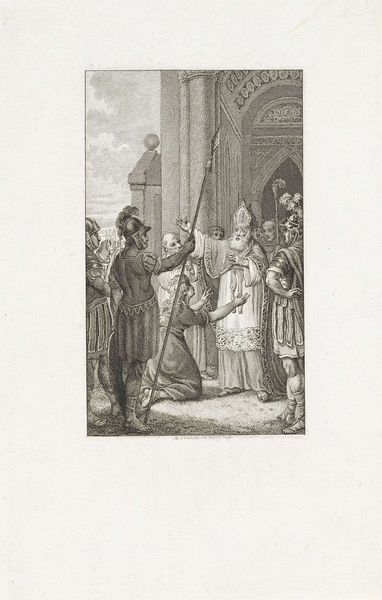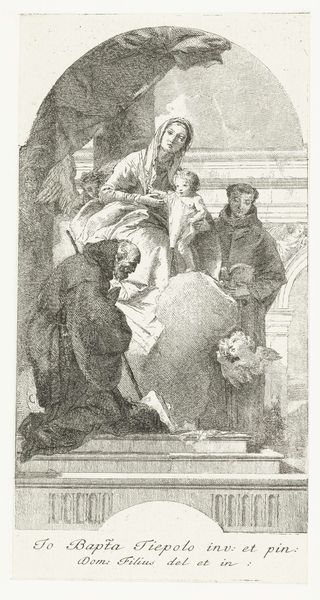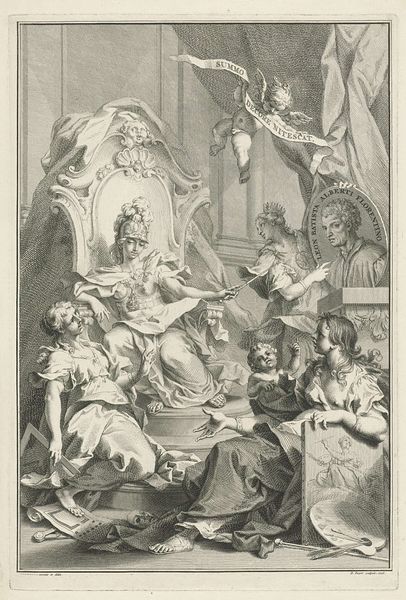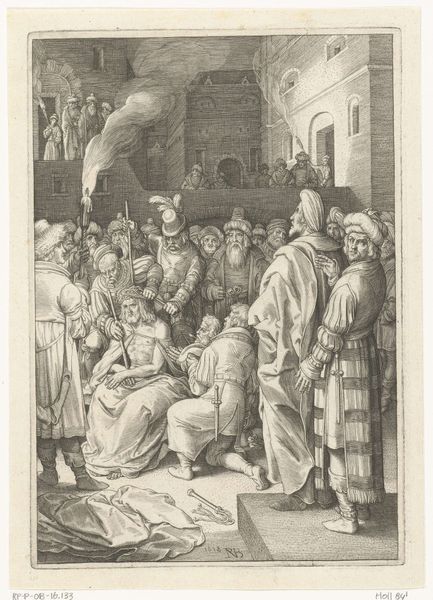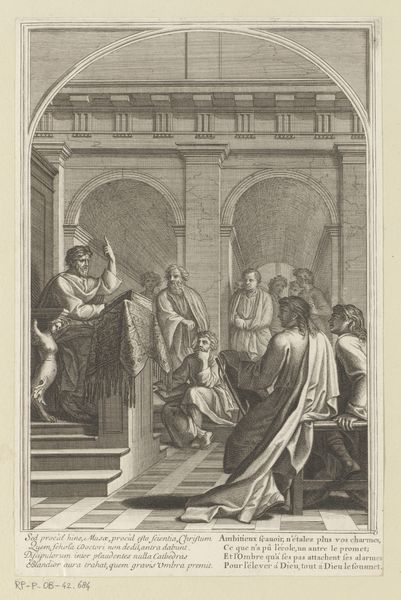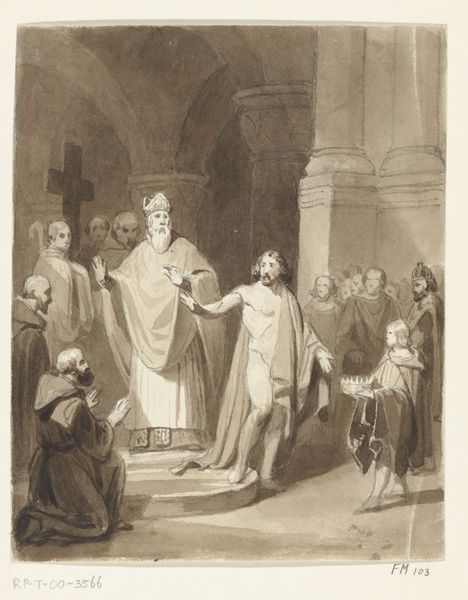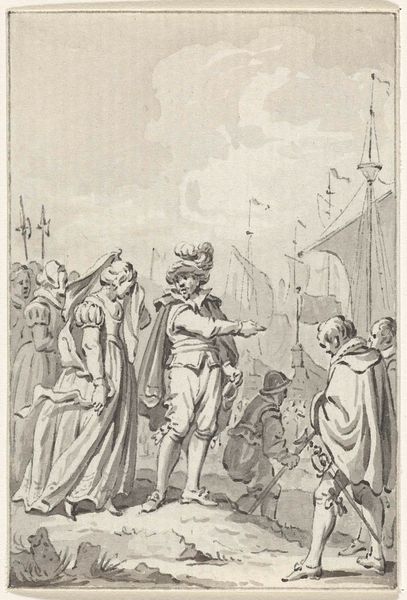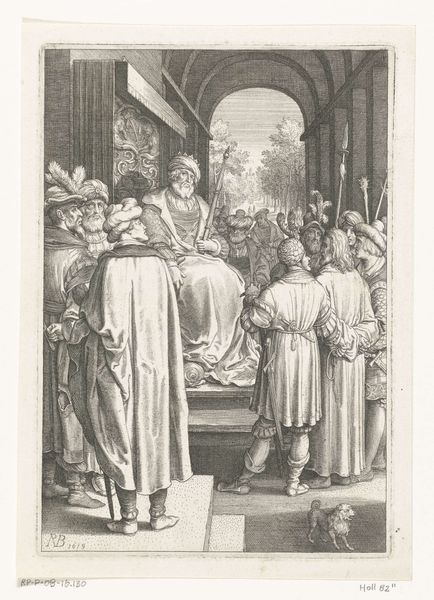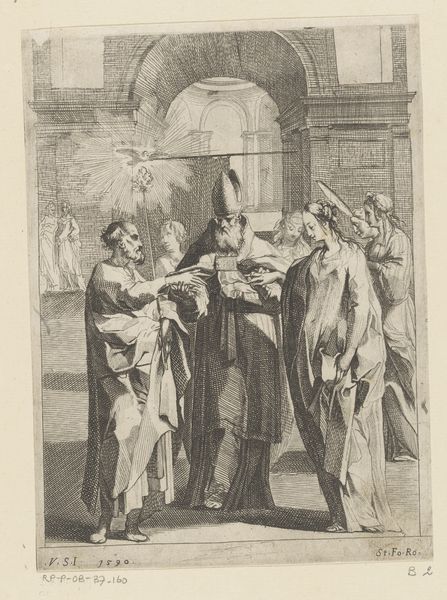
print, engraving
#
narrative-art
#
baroque
# print
#
old engraving style
#
figuration
#
history-painting
#
engraving
Dimensions: height 489 mm, width 231 mm
Copyright: Rijks Museum: Open Domain
Giovanni Domenico Tiepolo created this print, St Patricius Cures a Cripple, using etching—a process where lines are incised into a metal plate with acid, then inked and printed. This technique allows for detailed, reproducible images, tying the artwork to the burgeoning print culture of the 18th century. The print’s stark contrast comes from the etched lines of varying depths, creating light and shadow that define the figures and architectural setting. The linear quality gives it a sense of immediacy, as if quickly sketched, yet the composition is carefully constructed, emphasizing the miraculous healing. Etching, unlike painting or sculpture, democratized art. Prints could be widely distributed, making them accessible to a broader audience and enabling the spread of ideas and images. This particular print reflects the social and religious context of its time, where stories of miracles were circulated to reinforce faith and moral values. Ultimately, understanding Tiepolo's print requires appreciating how its material and process contributed to its cultural impact, dissolving the boundaries between fine art and popular communication.
Comments
rijksmuseum about 2 years ago
⋮
Patricius, better known as St Patrick, Ireland’s national saint, played an important role in the Christianization of that country in the 5th century. Giovanni Battista Tiepolo painted the large altarpiece after which this etching was made around 1746. The two kneeling figures at the right in the foreground of the painting making a somewhat stiff, uncomfortable impression may be the work of the young Giovanni Domenico Tiepolo. He also produced this print after the altarpiece.
Join the conversation
Join millions of artists and users on Artera today and experience the ultimate creative platform.
